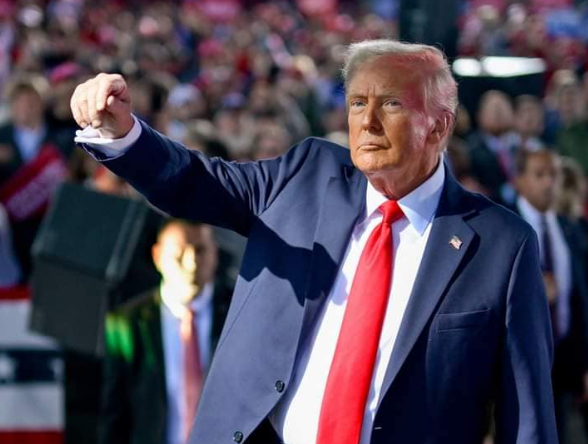Donald Trump’s victory in the recent US election signals potential challenges for China’s economy. Trump has pledged to impose tariffs of between 10 percent and 20 percent on all imports, along with additional proposals for a 60 percent tariff on Chinese goods. However, China remains uniquely positioned to withstand such sanctions due to its global trade influence and economic strength.
Washington appears concerned about China’s growing global influence, taking a protectionist stance to curb Beijing’s ascent even as multilateralism gains wider acceptance worldwide. A renewed US-China trade conflict may echo the first-term tensions that impacted the global economy without diminishing China’s international standing.
While a new round of trade disputes between Beijing and Washington in Trump’s second term (beginning January 20, 2025) could strain the global economy, China’s resilience remains robust for several reasons. As the world’s second-largest economy and top trading partner for over 120 countries, China’s connections to major economies such as Japan, South Korea, Russia, and the European Union enable it to counter US tariffs and sanctions effectively.
China’s strategic outreach includes forming alliances with European countries, traditionally aligned with the US, to strengthen its economic and security resilience. Ironically, while the West once championed globalisation, it now resorts to protectionism in response to China’s rise. However, the momentum of multilateralism is unstoppable, and US efforts to curb it may only slow but not halt China’s progress.
China’s strong and efficient supply chains have demonstrated resilience, backed by heavy investments in infrastructure, logistics, and manufacturing. By diversifying its supply chains, Beijing reduces its dependence on any single country or region, bolstering its capacity to withstand economic pressures from the US.
Despite some shifts in global supply chains to countries like Vietnam, China retains a substantial share of labour-intensive exports, from 18 percent in late 2017 to 17 percent in 2023. As the largest developing nation, China’s post-pandemic resilience and technology-sharing commitments continue to benefit many developing countries, particularly in Africa through the Forum on China-Africa Cooperation and similar initiatives.
China’s Belt and Road Initiative has fostered trust among partner countries, strengthening their economic and political ties with Beijing. This was evident when the European Union proposed a 35 percent tariff on Chinese electric vehicles, which Germany opposed to avoid straining relations with China.
Even if Trump enacts his tariff threats, China’s economy is expected to remain strong, backed by its manufacturing capacity, which enables it to meet its demands independently. This sector’s strength gives China confidence in facing external sanctions, as shown by its 6.1 percent industrial growth in the first quarter of 2024.
China’s manufacturing sector, accounting for nearly 30 percent of its economy, has held its position as the world’s largest manufacturing economy since 2010. Data from the United Nations Statistics Division reveals that China produced 28.7 percent of global manufacturing output in 2019, well ahead of the US. As China’s economy grows, its industrial base continues to support global consumers with affordable goods, from electronics to everyday products.
In 2023, China’s GDP stood at $18 trillion, compared with $9.7 billion in 1952, showcasing the economic miracle made possible by the country’s political stability, which has inspired citizens to work hard in support of the governments and the party’s goals.
— The writer is a Journalist and Communication Consultant

















